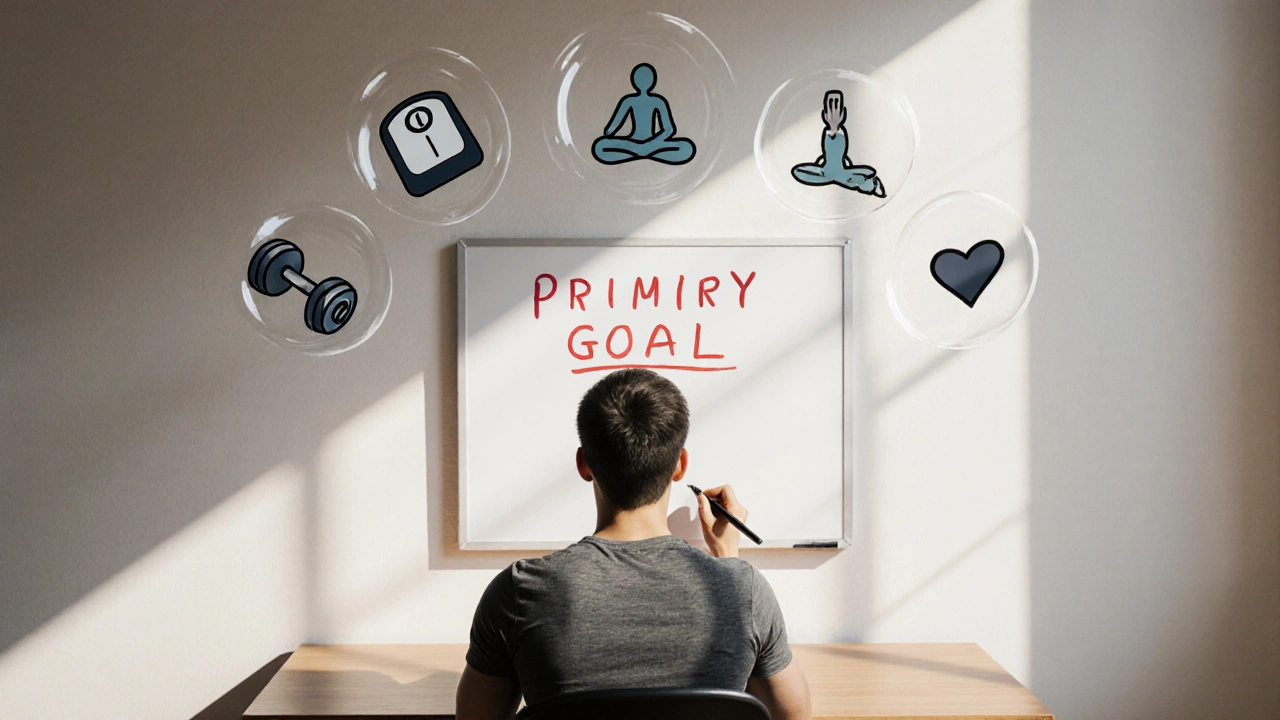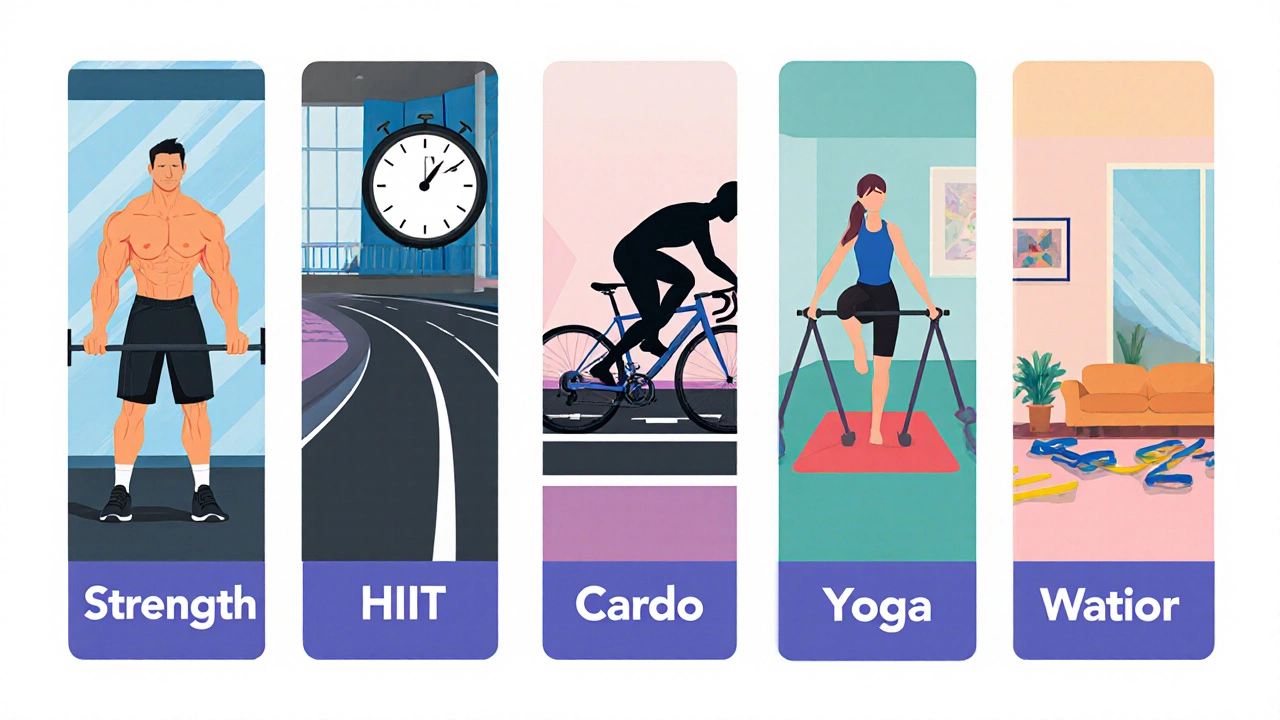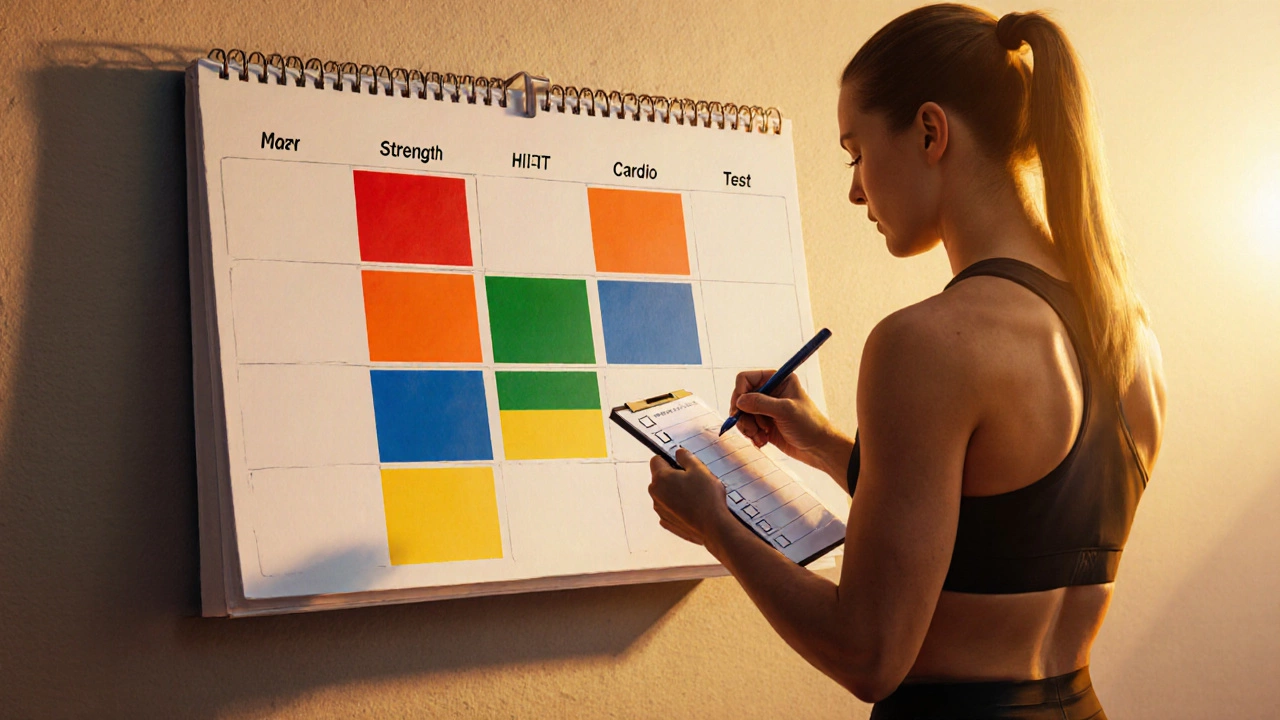Find the Best Workout Plan for Your Goals - Quick Comparison Guide
 Oct, 16 2025
Oct, 16 2025
Key Takeaways
- Identify your primary fitness goal - strength, weight loss, endurance, flexibility or general health.
- Match the goal to a plan type: Strength Training, HIIT, Cardio, Yoga or a hybrid.
- Consider schedule, equipment, experience level and recovery time when picking a plan.
- Use the decision checklist to avoid common pitfalls and stay consistent.
- Sample weekly schedules show how to structure each plan for real‑world results.
When choosing a Workout Plan a structured set of exercises designed to achieve a specific fitness outcome, the biggest challenge is cutting through the hype and finding what truly fits your life. With countless apps, influencers and "quick fix" routines flooding the internet, you may wonder which approach actually delivers results without burning you out.
1. Pinpoint Your Fitness Goal
Before you even glance at a schedule, decide what you want to accomplish. Goals fall into five broad buckets:
- Build muscle and strength - aim for heavier lifts, progressive overload, and low‑rep sets.
- Lose body fat - combine calorie‑burning cardio with moderate resistance work.
- Boost endurance - focus on longer‑duration aerobic sessions.
- Increase flexibility and mobility - incorporate stretching, balance and low‑impact flow.
- Maintain overall health - a balanced mix of all the above.
Write your top goal down and keep it visible. It will be the compass for the rest of the decision‑making process.
2. Overview of Popular Workout Plan Types
Below is a snapshot of the most common plan categories and the people they serve best.
| Plan Type | Primary Goal | Typical Duration | Equipment Needed | Best For |
|---|---|---|---|---|
| Strength Training resistance work focused on increasing muscular force | Muscle gain, strength | 45‑60min | Barbells, dumbbells, machines | Beginner‑to‑advanced lifters |
| HIIT high‑intensity interval training alternating short bursts with rest | Fat loss, cardio fitness | 15‑30min | Bodyweight or minimal gear | Time‑pressed individuals |
| Cardio steady‑state aerobic activity | Endurance, heart health | 30‑60min | Treadmill, bike, outdoors | Runners, cyclists, walkers |
| Yoga mind‑body practice combining poses, breath and meditation | Flexibility, stress relief | 30‑75min | Mat, optional blocks | All ages, injury‑recovery |
| Home Workouts any routine performed in the living space with limited gear | General fitness, convenience | 20‑45min | Resistance bands, bodyweight | Busy parents, travelers |

3. How to Match a Plan to Your Goal
Use the following decision tree. Answer each question, then see which plan aligns.
- Do you want to lift heavier weights?
Yes → Strength Training - Is your schedule under 30minutes per day?
Yes → HIIT - Do you love being outdoors or on a machine?
Yes → Cardio - Do you need stress relief or better mobility?
Yes → Yoga - Do you have limited space and equipment?
Yes → Home Workouts
Most people end up blending two or three types. For example, a beginner aiming for weight loss might combine 3days of HIIT with 2days of strength circuits and a weekly yoga session for recovery.
4. Sample Weekly Schedules
Below are concrete templates you can copy‑paste into a calendar. Adjust rest days based on how your body feels.
4‑Day Strength‑Focused Routine
- Monday - Upper body (bench press, rows, shoulder press)
- Tuesday - Lower body (squat, deadlift, lunges)
- Wednesday - Active recovery (30min yoga flow)
- Thursday - Upper body (pull‑ups, dips, curls)
- Friday - Lower body (leg press, hamstring curl, calf raises)
- Saturday - Light cardio (20min jog) or rest
- Sunday - Rest
3‑Day HIIT + Cardio Hybrid
- Monday - HIIT (8×30sec max effort, 90sec rest)
- Tuesday - Steady‑state cardio (45min cycling)
- Wednesday - Rest or gentle yoga
- Thursday - HIIT (10×20sec burpees, 40sec rest)
- Friday - Light jog (30min)
- Saturday - Home workout (bodyweight circuit)
- Sunday - Rest
Balanced 5‑Day Mix for General Health
- Monday - Strength (full‑body circuit, 45min)
- Tuesday - Yoga (60min Vinyasa)
- Wednesday - Cardio (30min interval run)
- Thursday - HIIT (12‑min bodyweight)
- Friday - Strength (focus on weak points)
- Saturday - Outdoor activity (hike, bike ride)
- Sunday - Rest or meditation

5. Decision Checklist - Avoiding Common Pitfalls
- Time reality - Do you actually have the minutes you claim?
- Equipment access - Will you need a gym membership you can’t keep?
- Recovery - Is the plan too intense for your current fitness level?
- Progress tracking - Have you set measurable markers (e.g., “increase squat 5lb each week”)?
- Enjoyment factor - If you dread the routine, you’ll quit.
Mark each item with a ✅ or ❌. If you have three or more ❌, tweak the plan before you start.
6. Frequently Asked Questions
How often should I change my workout plan?
Most experts recommend a major shift every 8‑12weeks. Small tweaks (adding a set, changing tempo) can happen every 2‑3 weeks to keep progress steady.
Can I combine strength training and HIIT in the same week?
Absolutely. Pair 2‑3 strength days with 1‑2 HIIT sessions, ensuring at least 48hours between heavy lower‑body work and high‑intensity intervals.
What’s the best plan for someone over 50?
A balanced mix of low‑impact cardio, light strength (machines or resistance bands), and regular mobility work (yoga or dedicated stretching) works well. Prioritize joint‑friendly moves and allow extra recovery.
Do I need a gym membership to follow a good workout plan?
Not necessarily. Many effective plans (HIIT, bodyweight circuits, yoga, resistance‑band routines) can be done at home or in a park with minimal cost.
How can I track progress without a fancy app?
A simple notebook works: log date, exercise, sets, reps, weight, and perceived effort. Take monthly photos and record body measurements to see visual changes.
7. Take the First Step Today
Pick the plan that matches your top goal, write it into your calendar, and commit to the first week. The best workout plan isn’t a secret formula - it’s the one you can actually stick to while moving you toward the result you care about most. Adjust as you learn, stay consistent, and watch the transformation happen.
